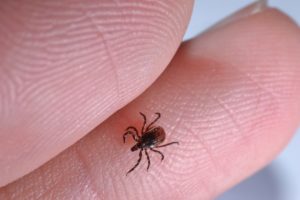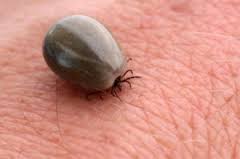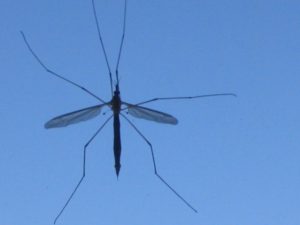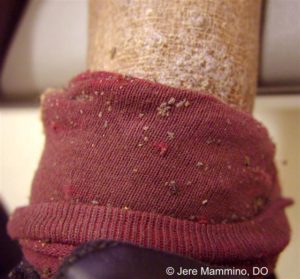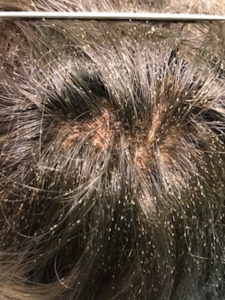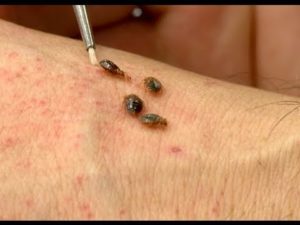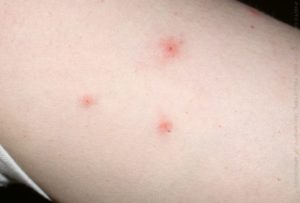Bed Bugs and the bed bug bites on the human body.
TYPES OF INSECTS THAT CAN TRANMIT DISEASE:
Mosquitoes
There are different species of mosquitoes (Anopheles, Aedes, Culex) and these have completely different preferred habitats, times when they are active and types of bite. The lavae that produce the adults develop in areas of stagnant water (receptacles, reservoirs, ponds, lakes, etc.). They transmit certain specific diseases according to the specific species, climate and habitat: malaria (Anopheles), chikungunya virus, dengue fever, yellow fever, Japanese encephalitis, lymphatic filariasis.
Their flight can be more or less noisy; their bite is not always painful. Half of all mosquito bites occur through clothing.
Flies, midges
The Chrysops (horse flies) are the vector for loa loa filariasis. Simuliidae (black flies) transmit onchocerciasis. Certain members of the glossina genus (tsetse flies) transmit African trypanosomiasis (sleeping sickness). Certain of the phlebotominae (sand flies) transmit leishmaniasis. Their bites are not always felt.
Besides their direct role in the transmission of microorganisms, flies can be the cause of conditions linked to the development and to the migration of their lavae beneath the skin (the Cayor worm is linked to the passage through the skin of the lavae of Condylobia anthropophaga which lays its eggs on the ground but also on linen). The contamination occurs either by lying down on ground contaminated by the eggs laid by the fly, or via clothes on which the flies have laid their eggs while drying. Prevention is achieved by not lying down in the ground and by avoiding drying one’s clothes in the open air. It is also recommended that one irons one’s clothes after they are washed in order to destroy, with the heat from the iron, any lavae present.
Bed bugs
On the South American continent, the triatomines or reduviidae (bed bugs) transmit Chagas disease (American trypanosomiasis). They live in the walls of damp houses and are only active at night.
Lice, fleas
Lice transmit different bacterial infections: bartonellosis (Trench fever), borrelliosis (relapsing fever), and certain types of rickettsiosis (typhus). Rat fleas are a vector for the plague.
Ticks
There are numerous species of ticks, each one having a relatively specific habitat. They are the vector for numerous diseases: Lyme disease, tick-borne meningoencephalitis, Crimean–Congo hemorrhagic fever, tick-borne relapsing fever, Q fever, the tick-borne spotted fevers, babesiosis, ehrlichiosis, tularemia.
Tick bites result from contact with grassland. This risk is generally restricted to certain well-defined regions. Once the ticks are on the skin, they migrate towards the major skin folds (groin, armpits) where they implant themselves. They do not begin to feed until 12 to 24 hours have passed and so the risk of infection is low if they are quickly removed.
Besides the transmission of various diseases, a tick bite can, in its own right, be the cause of a local inflammation reaction that can sometimes be highly pronounced.
Now learn the diseases they and more insects can transmit, especially in the warmer weather since they increase in population during that temperature as opposed to cold in Part III.
